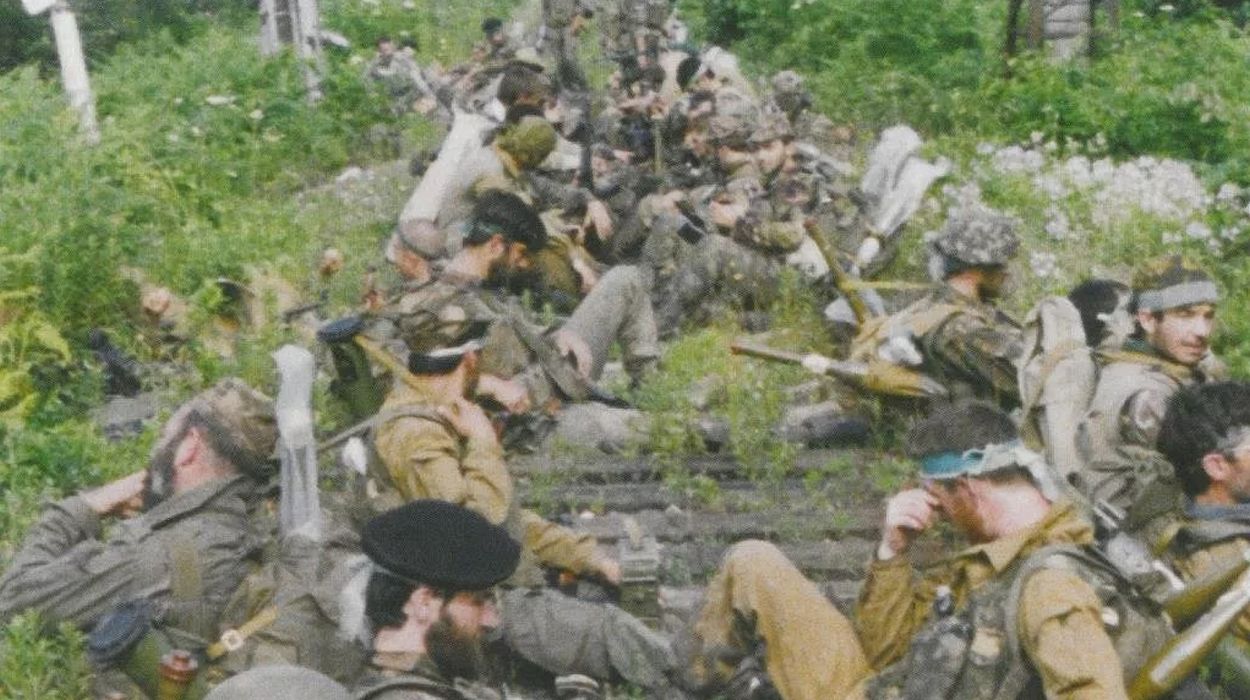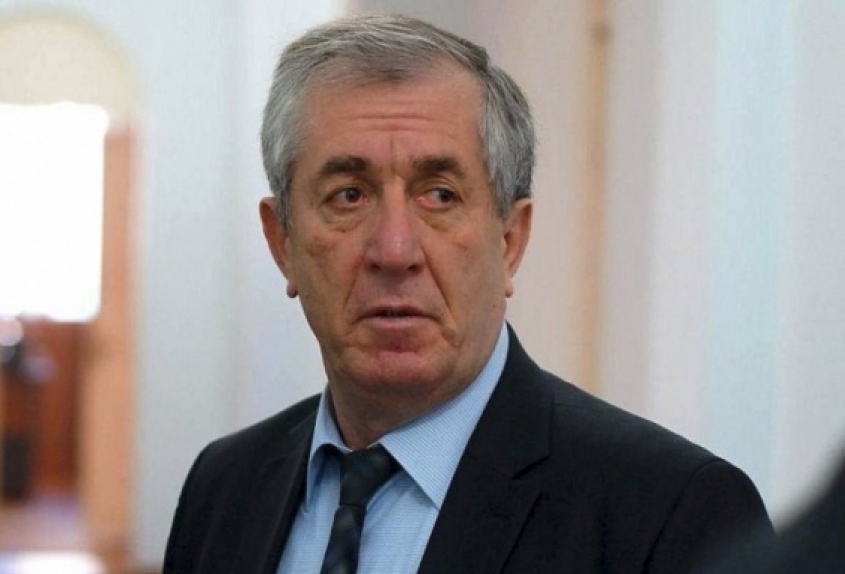The Tamysh Landing Was Entirely Voluntary

On July 2, 1993, the Abkhazian marine forces launched an amphibious assault near Tamysh.
Vitaly Sharia / Ekho Kavkaza — In Abkhazia, there is a widespread belief that a turning point in the Georgian-Abkhaz war was marked by the July military offensive conducted by the Abkhazian army. This operation, which began exactly 30 years ago with the marine forces making a landing at Tamysh, garnered considerable successes, significantly paving the way for an impending victory. Yesterday, the village of Tamysh played host to a series of commemorative events to mark this anniversary.
Rewinding to July 1993, which is three decades ago, the Abkhazian army was engaged in an offensive operation that proved to be quite fruitful, edging it closer to a momentous triumph.
To better understand the role of the July offensive in the history of the Patriotic War of the people of Abkhazia, it is necessary to delve into some facts and figures. The war spanned over a year, amounting to 413 days in total, and for almost the entirety of the last year, the Abkhazian army was primarily focused on liberating the republic's capital from the grip of Georgian forces. In the wake of the victorious Gagra operation in early October 1992, Abkhazian troops made several attempts to capture strategically important heights to the north of Sukhum throughout that fall. However, due to limited resources, these attempts were more akin to probing assaults. In January and March of 1993, direct attempts to seize the city by crossing the Gumista River at its lower reaches ended in failure, with the troops suffering substantial casualties, particularly in March. It was only after a three-and-a-half-month hiatus, on the night of July 2nd, that the Abkhazian forces launched a meticulously planned offensive. During this operation, the troops mounted simultaneous attacks on the enemy from various flanks across different sections of the frontlines, laying the groundwork for what would become the decisive September offensive...
On the night of July 2nd, under the leadership of Zaur Zarandia, codenamed “Lakut,” a naval landing force comprising around 300 men was deployed in the village of Tamysh. Alongside the Eastern Front units that joined them, the landing forces initiated an advance along the central highway. Intense combat ensued as they approached the middle school in Tamysh. At this location, the “Avaza” Dusheti Battalion was decisively defeated. For eight consecutive days, from July 2nd to 9th, Abkhazian fighters took control of the strategic Ochamchira-Sukhum highway, firmly holding a corridor approximately 10 kilometres long and inhibiting the Georgian military command from dispatching reinforcements to the Sukhum area. Subsequently, after demolishing the bridges along this stretch of the highway, they withdrew to the fortified positions in the Abkhazian villages within the Ochamchira district.

Interestingly, the Tamysh landing operation executed by the Abkhazian naval forces bears resemblance to an analogous landing operation conducted by the Georgian naval forces nearly a year earlier. The Georgian operation, carried out on the night of August 14th to 15th in 1992, involved troops departing from Poti and arriving in the vicinity of Gagra, specifically at the village of Gantiadi, now known as Tsandripsh. This Georgian landing force, comprised of several hundred men, utilised two landing vessels, two “Comets”, and a barge, and was accompanied by four armoured units. The key distinction between these two landings lies in the fact that the Georgian landing was met with resistance from a small group of Abkhazian militiamen, armed predominantly with hunting rifles. In contrast, the Abkhazian forces faced artillery fire from Ochamchira.
Additionally, two days after the Tamysh landing, at 3 a.m. on July 4th, a contingent of Abkhazian fighters crossed the highway bridge over the Gumista River in Lower Eshera and drove the enemy away from a segment of the front line. This was, however, a diversionary tactic as the group held their position for almost a day before retreating to their prior locations by the end of the subsequent day. These fighters were colloquially referred to as "kamikazes", as the odds of surviving this raid were slim. Concurrently, the central actions of the offensive operation were taking place to the north of Sukhum. After crossing the Gumista River in the Dvurechye area, where the Eastern and Western branches of the Gumista merge, Abkhazian forces captured the villages of Guma, Akhalsheni, and Kaman, along with the Sukhum Hydroelectric Power Station (SukhumGES) over a span of a few days. The Georgian General Zurab Mamulashvili was captured during these operations (along with his underage son, who is currently leading the "Georgian Legion" in the war in Ukraine). On July 9th, at 10 p.m., the forces of the Republic of Abkhazia made their entry into the village of Shroma, and by midnight the enemy's resistance was quelled. The flag of the Republic of Abkhazia was subsequently hoisted over this significant settlement.
The further advance of the Abkhazian troops was halted, but the Georgian troops, despite the broadcast statements of their leadership, could not expel them from Shroma and the nearby villages. There were persistent fights for control of the heights located here, dominating over the capital of Abkhazia, with the village of Tsugurovka and the Ahbyuk hill changing hands several times...
There was confusion on the Georgian side. The head of the police academy in Tbilisi, Givi Kvantaliani, was demoted to the rank of private for refusing to go to war with his cadets. On July 18, the Chairman of the Council of Ministers of the Autonomous Republic of Abkhazia, who was also the head of its Defense Council, Major General Tamaz Nadareishvili, resigned citing health reasons.

Aslan Kobakhia
Today I got in touch with the Hero of Abkhazia, public-political figure Aslan Kobakhia. Here is what he said about the offensive operation of the Abkhazian army that began thirty years ago:
“This July operation is a bright episode of the war. One of the most vivid combat operations of the Abkhazian army. A unique operation. I believe that there was a mass feat. There were volunteers. The Tamysh landing was completely voluntary. And the heights above Sukhum were taken, although some were not taken yet. But the enemy couldn't do anything to recapture what our army had occupied.”
Why can we talk about a fundamental turning point in July during the Georgian-Abkhazian war? It's not just about the heights that were captured. It's also about the fact that the enemy's spirit was significantly broken. For the first time since the beginning of the war, which didn't happen either after the Moscow meeting or after the Battle of Gagra, the Georgian side decided to sign an agreement that provided for the withdrawal of Georgian troops from Abkhazia and the restoration of the activities of legitimate authorities in the republic. As expected, this was met with strong opposition in Tbilisi. However, the shuttle diplomacy of the personal representative of the Russian President Boris Pastukhov, who was constantly shuttling between Gudauta, Tbilisi, and Sukhum, led to the signing of the Agreement on the Ceasefire in Abkhazia and a mechanism for monitoring its observance on July 27 in Sochi. The agreement, in particular, stated: by August 5, 1993, a joint commission is to be formed to resolve the conflict in Abkhazia, with representatives and observers from the UN and OSCE participating. It was clear that the Georgian side agreed to sign the document under the threat of losing Sukhum and military defeat.

Yesterday, in the village of Tamysh, located in the Ochamchira district, a series of solemn events took place to commemorate the 30th anniversary of the Abkhazian army's naval forces landing in the area. The President of Abkhazia, Aslan Bzhania, paid tribute by laying flowers at the Memorial of Glory situated in the heart of the village. The Vice President, Badra Gunba, delivered an address to the assembled crowd.
This article was published by Ekho Kavkaza and is translated from Russian.